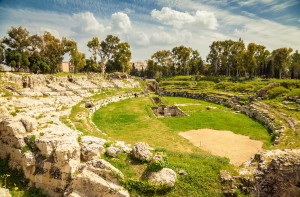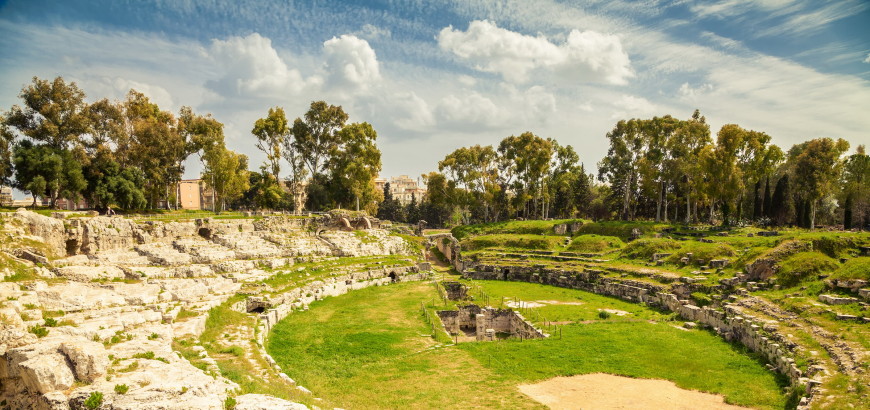
Roman Amphiteather
0931 66206
Monday to Saturday from 9.00 am until one hour before sunset
Sundays and holidays from 9.00 to 13.45
The ticket office closes one hour before the closing time
Closing at 16.30 during the Classical Play
€ 10,00
Reduced (for young people aged 18 to 25 years) € 5.00
Resident in Siracusa € 1,00
Free for members of the European Union under the age of 18
Combined tickets:
Archeological Park of Neapolis and Museum “Paolo Orsi” € 13.50 – reduced € 7.00
Archeological Park of Neapolis and Villa Tellaro € 12.00 – reduced € 6.00
Archeological Park of Neapolis and Galleria Bellomo € 13.50 – reduced € 7.00
Archeological Park of Neapolis, Museum “Paolo Orsi”, Galleria Bellomo and Villa Tellaro € 24.00 – reduced € 12.00
Dating back to the imperial age (III – IV century AD), the Roman amphitheater is one of the greatest buildings of this kind in existence. Elliptical, outer diameters measure m. 140 x 119 and it was partially excavated in the rock of Temenite.
Spanish spoliation in the sixteenth century have completely destroyed the side elevation. Two entrances into the arena (m.70×40); the Main, North, was connected with a large yard to house the chariots of the audience, while the secondary, the South, is currently being used to visit the monument.
In the garden they were accommodated the impressive sarcophagi from the necropolis of Syracuse and Megara Hyblaea. The arena was surrounded by a high podium inside which there was a passageway for the release of the gladiators and wild beasts. Two other ambulatory ran at higher levels and the stairs served to the spectators to reach the place order. A porch closed the building. Above the elevation of the corridor that surrounded the arena there are still marble blocks of the seats owners.
At the center of the arena there is a large rectangular room, connected by a channel dug along the south, both covered, functional to the necessary works for the preparation and unrolling of the shows.
Site without architectural barriers.

